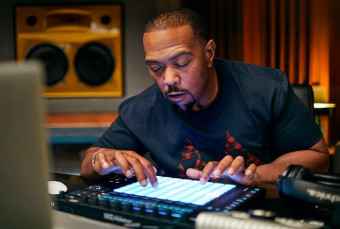Premiere Pro Lumetri Color Correct Like A Pro
Tags: Adobe Premiere
Learn the essentials of color philosophy and perform technical color correction and grading tasks.
Last updated 2022-01-10 | 4.4
- Use all the settings from the Lumetri Color window- Read the waveform and vectorscope
- Correct the exposure and white balance
What you'll learn
* Requirements
* A basic knowledge of Premiere Pro* An installation of Premiere Pro CC 2015 or beyond
Description
This complete course will take you to the essentials of color correction with the Lumetri color tools inside Premiere Pro. You will learn different techniques while also understanding how color philosophy works.
We'll fly together through this wonderful world of colors. And on the end you will be able to fix color issues and take your shots to a higher professional level.
What do I get?
- 5 introduction lessons to digital color (HD video)
- 15 technical screen cast lessons (HD video)
- An instructor that replies your question within 24h
- All project files and video clips used in this course
What will I learn?
You will learn a complete essential training of color correction and grading in Premiere Pro.
- The philosophy of digital color
- The functionality of every Lumetri tool
- Read and use the measurement tools like the waveform and vector scope
- Perform a color correction on an a bad shot
- Create masks to color correct a specific area
- Match the colors of different shots
For who is this course?
This course is aimed at beginners in the color correction/grading field. You are not required to have any pre-knowledge, however some basic experience with Premiere Pro will help a lot.
This course is not for experienced colorist.
Requirements
- An installation of Adobe Premiere Pro CC 2015 or later
- Mac or PC that can process full HD video clips to work with the attached materials
What is Lumetri?
Since the release of Adobe Premiere Pro CC 2015 we can now find the Lumetri engine inside Premiere itself. Before it was only part of the color correction program "Adobe Speedgrade". These lumetri tools have so much possibilities to make professional color corrections and grading that we don't need a dedicated program for it anymore.
Who this course is for:
- This course is for any Premiere Pro user that like to learn color correction
- This course is not for experienced colorists
- This course is not for Premiere Pro beginners. We advice to first follow our Premiere Pro Beginners course.
Course content
4 sections • 26 lectures
Introduction Preview 02:59
Hello filmmakers! I'm Jordy, a filmmaker and Youtuber from Beglium. In this introduction I'd like to introduce myself further and give you some quick information before we start on the course.
The Lumetri Engine Preview 01:36
In this lecture we're going to prepare our workspace and find out where the different color grading tools of the Lumetri engine can be found.
Color Correction vs Grading Preview 02:54
Some people talk about color correction while other people talk about color grading. But what's the difference? Find it out in this lecture!
What is color? Preview 03:03
Like with paint, digital colors also have three base colors. With these base colors we can create or manipulate new colors. In this lecture you will learn how to change a color using RGB.
Color Psychology Preview 03:52
Colors can bring a certain emotion. If you watch the same shot each time with a different grading, you will feel a different emotion with it. This is the psychology of color grading. In this lecture we'll go over the very basics and see what kind of emotion lays at the base colors.
Chapter 1 Quiz
Test your knowledge of the first chapter. We've gathered one question from each lecture.
The Basic Tools Preview 05:46
In this lecture we will have a look at all the basic color tools. Like the Temperature, exposure, contrast, saturation and more.
The White Balance (extra lesson) Preview 02:21
With the Premiere Pro update in June 2016 (CC 2015.3) we got a new feature that allows us to automatically chose the white balance. From the basic tools we now have a color picker to select a white point in the video. Lumetri will automatically set the correct white balance upon that selection.
The Waveform Preview 08:57
When changing something you always want to measure what you're doing. In color correction we use the waveform to measure the exposure of a shot. In this lecture you will learn how to read and use the waveform tool.
The Vectorscope Preview 05:52
Not only exposure can be measured, but also the saturation of the colors. Here it's also important that we keep track of how the colors look in our vectorscope. This lecture will show you how to read and use this tool.
A Basic Color Correction Preview 06:21
Now that we've learned how to use the basic color tools and it's measurement tools, we can perform a basic color correction. In this lesson we will fix an overexposed shot with off-colors.
Chapter 2 Quiz
Test your knowledge of the second chapter. We've gathered one question from each lecture.
How to work with LUT's Preview 06:40
LUT's are small files which can be loaded into Premiere Pro. These "small files" carry a bunch of information that will change the colors and exposure of your video in a certain way. IN this lecture you will learn how to use one of these LUT's
Creative Looks Preview 03:50
The next tab in the Lumetri color tools has a bunch of creative effects. From here we can apply special looks.
Creative Adjustments Preview 07:37
Under creative adjustments we can find several interesting tools like the saturation and vibrance. Both alter the saturation but in a different way. It's therefore important that these two controls are in balance.
RGB Curves Preview 09:48
In this lecture you will learn how to alter the colors and expose with the RGB curves. This is a different way of working, but can sometimes deliver your desired outcome easier.
Saturation Curve Preview 03:44
Each video clip consists out of multiple colors. With the saturation curse we're able to increase or decrease the saturation of each individuel color. This can create interesting outcomes like the "sin-city" look.
Color Wheels Preview 05:18
The colors wheels are the most popular tools to make changes to your clip. Just like the basic tools and curves it can alter your saturation, hue and exposure. But for some situations these wheels are easier and faster in use. Find out how they work in this lecture.
Secondary Color Correction (extra lesson) Preview 07:08
With the HSL secondary we're able to select a specific color and manipulate that. This extra lesson covers a new feature form the June 2016 update. We'll take the tool into a real practice as well where we'll recreate the Sin City look.
Working with Vignette Preview 03:53
Vignetting is sometimes interesting but other times we would like to remove it. With the vignette tool we can add a beatifull vignetting or remove one if needed.
Chapter 3 Quiz
Test your knowledge of the third chapter. We've gathered one question from each lecture.
Masking and Tracing Preview 06:23
In this lecture you will learn how to adjust the colors of one specific part in your shot. This could be the face of a certain person. But what if that persons moves around? No worries, you will also learn how to track that movement.
Color Transitions Preview 07:15
When moving the camera from one room to another, your colors could drastically change. At such a point you would like to animate your color grading to that it makes a transition from one room to another. In this lecture you'll learn two ways to do this.
Matching Clips Preview 12:49
We shoot an interview with two cameras, but when we start editing on them we see that the colors don't match. I think we've all been there. But luckily we can fix that with the Lumetri color tools. Learn in this lecture how to do that.
Greenkey Color Grading Preview 09:07
Performing a green-key is usually done to place your subject in another world (the new background). But it isn't always so easy to match your studio lighting with that of the background. In this lecture you will learn how to grade your shot so it matches your background.
Chapter 4 Quiz
Test your knowledge of the fourth chapter. We've gathered one question from each lecture.








 This course includes:
This course includes:
![Flutter & Dart - The Complete Guide [2022 Edition]](https://img-c.udemycdn.com/course/100x100/1708340_7108_5.jpg)















